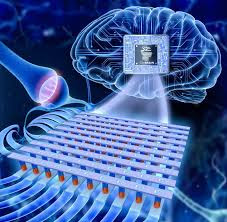Neuromorphic engineering, an interdisciplinary field at the intersection of neuroscience, computer science, and electrical engineering, is revolutionizing the way we perceive and interact with machines. It aims to create electronic systems that mimic the structure and functionality of the human brain, bridging the gap between biology and technology.
At its core, neuromorphic engineering seeks to replicate the brain's remarkable ability to process and interpret complex information in real-time. Inspired by the intricate network of neurons and synapses, researchers are developing hardware and algorithms that can emulate the brain's dynamic behavior and cognitive capabilities. These neuromorphic systems can potentially surpass traditional computing methods in terms of efficiency, adaptability, and parallel processing.
One of the key motivations behind neuromorphic engineering is to unlock new frontiers in artificial intelligence. By emulating the brain's neural architecture, these systems can learn and adapt from their environment, enabling more natural and intelligent interactions. Neuromorphic hardware, such as neuromorphic chips, leverages parallelism and event-driven processing to accelerate computations and reduce power consumption, paving the way for energy-efficient and brain-inspired AI algorithms.
Beyond AI, neuromorphic engineering holds promise in various domains. In robotics, for instance, neuromorphic systems can enhance the autonomy and decision-making capabilities of robots, enabling them to navigate complex environments and interact with humans more intuitively. Medical applications are also emerging, with neuromorphic devices facilitating prosthetics control, brain-computer interfaces, and neural implants for therapeutic purposes.
The field of neuromorphic engineering is a testament to the boundless possibilities that emerge when we draw inspiration from nature. By unraveling the mysteries of the human brain and translating its principles into tangible technologies, we are forging a deeper connection between humans and machines. This symbiotic relationship has the potential to revolutionize industries, empower individuals with disabilities, and unlock new frontiers in cognitive computing.
However, as we venture further into the realm of neuromorphic engineering, ethical considerations and responsible development must be at the forefront. Privacy, security, and transparency are essential aspects that need careful attention to ensure the responsible deployment of these technologies for the benefit of humanity.
Neuromorphic engineering represents a captivating journey into the depths of our own cognition and the limitless possibilities of technology. As we continue to unravel the complexities of the human brain, we inch closer to a future where machines not only assist us in our endeavors but also possess the capacity to understand and augment our own cognitive abilities. It is a testament to our innate curiosity and relentless pursuit of knowledge, as we strive to build a world where humans and machines coexist harmoniously, creating new pathways for innovation and progress.






